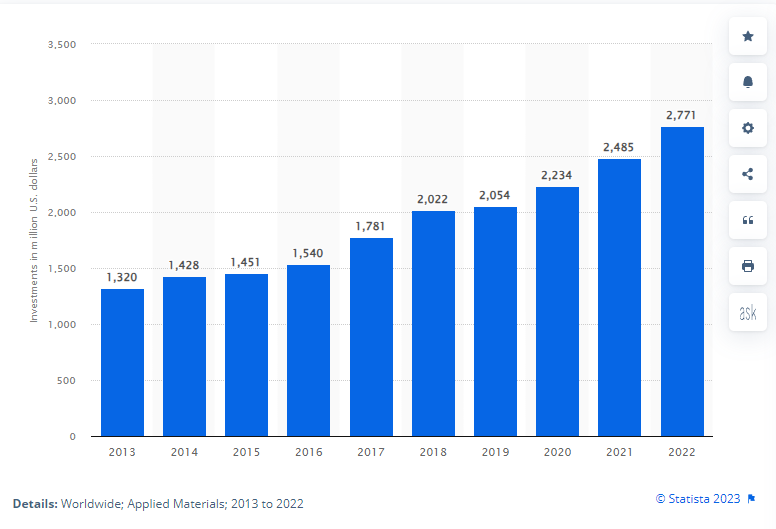Materials engineering, or materials science, is the field of researching and discovering materials, while the finding of use cases for these new materials also belongs to the materials engineering & science field.
For centuries, humanity continually has “upgraded” from one material to another. The Copper Age saw us primarily use copper, while the Bronze Age and Iron Age followed. Eventually, more modern materials rose in prominence, such as steel, aluminum, plastics, and so on. Even more modern materials include carbon fiber reinforced plastics, which are both strong and light and are used in high-end vehicles, airplanes, and so on.
This progress in finding newer and better materials has made many of our modern technologies and products possible: We can only build high-rise buildings, spaceships, aircrafts, and so on, due to the progress we saw in finding new materials over time.
The importance of material engineering is shown by the following chart:

We see that investments of applied materials in R&D and engineering have risen a lot over the last decade, as companies, governments, and so on are eager to benefit from the advantages of new materials they seek to discover.
How Do Computers Help?
While materials engineering is not a new field, computational materials engineering is. Material scientists utilize new technologies – and MegaTrends we have covered in the past –such as deep learning, Big Data, and AI to find new materials faster and in a more cost-efficient way. This speeds up the pace of innovation, which will result in exciting new discoveries of new materials and combinations of existing materials in the coming years.
The Emerging Front-Runners
While there are not a lot of dedicated Computational Materials Engineering pure-play companies investors can pick from, there are many companies that are already using this trend to push into new frontiers.
One of these companies is good old Ford Motor Company (NYSE: F), which is working on new carbon fiber composites. The company plans to use these in its lightweight vehicles, including its expanding EV lineup. Some of these research projects have also been subsidized by the Department of Energy.
Better materials promise lighter vehicle weight, thereby reducing consumption and improving efficiency – which, in turn, will be a major competitive advantage for Ford in the embattled electric vehicle space.
Competitors such as Tesla (NASDAQ: TSLA) also invest heavily in material research, while suppliers such as Dow Inc. (NYSE: DOW) do so too.
Avery Dennison (NYSE: AVY) is a materials science company that’s supplying a wide range of industries with its inks, graphic wrappers, etc., and that keeps pushing into new technologies, such as smart labeling.
Get Ahead of the Next MegaTrend and Join Our Premium Portfolios!
Unleash the Power of Proffe’s Growth Stocks
Gain exclusive access to our monthly entry-level publication featuring 20 handpicked MegaTrend stocks, carefully selected using Michael Proffe’s Trendsetter strategy.
Supercharge Your Portfolio with MegaTrend Stocks and Options
If you’re serious about building generational wealth, incorporating options alongside your stock picks is essential for long-term growth. Introducing Proffe’s Trend Portfolio, a fusion of top-notch MegaTrend stocks and carefully selected, long-term, in-the-money call options based on Michael Proffe’s proprietary 3-step TrendSetter analysis. Gain access to our exclusive, time-tested stock portfolio accompanied by our distinctive and successful options strategy.

